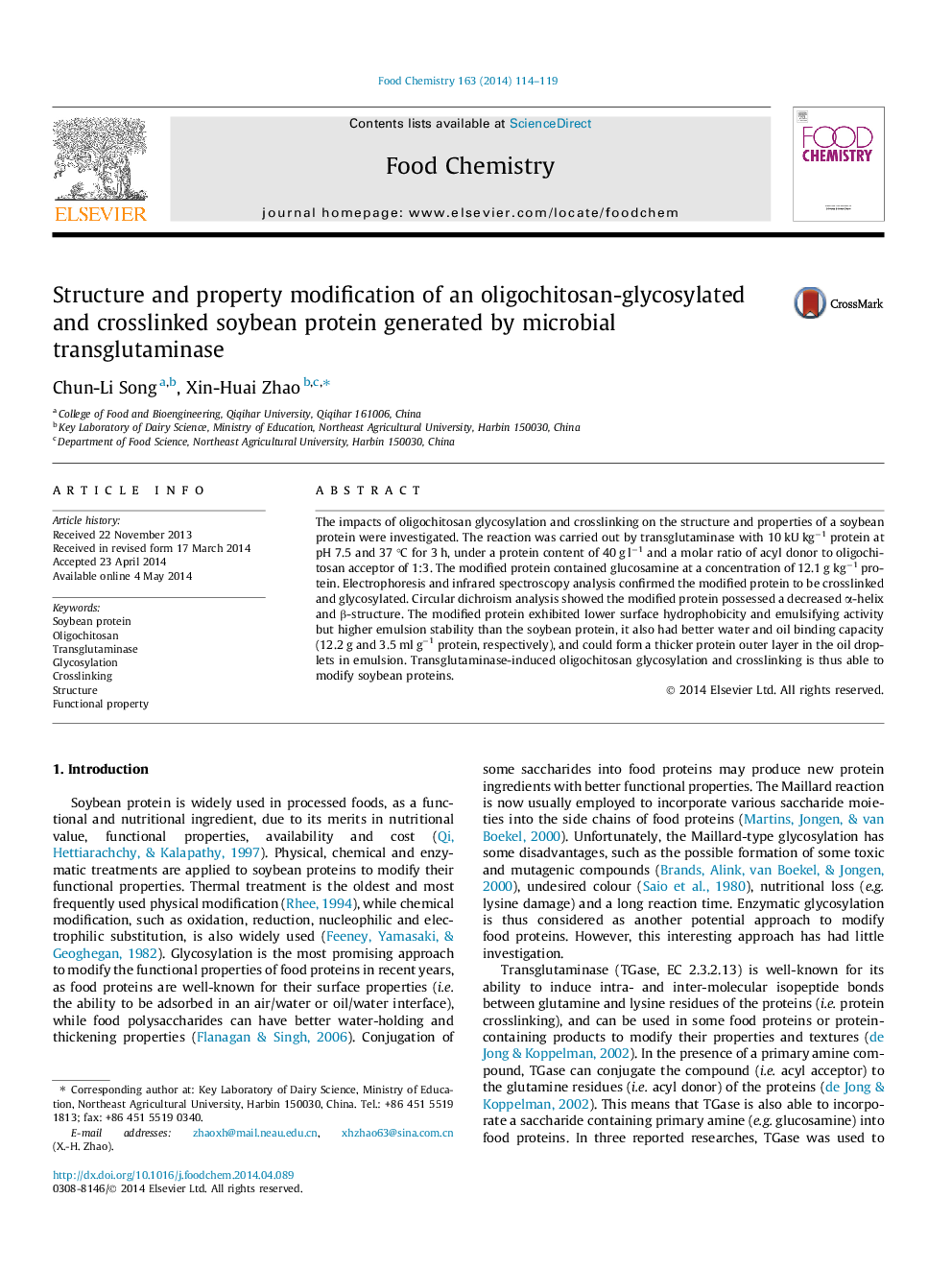| Article ID | Journal | Published Year | Pages | File Type |
|---|---|---|---|---|
| 7596696 | Food Chemistry | 2014 | 6 Pages |
Abstract
The impacts of oligochitosan glycosylation and crosslinking on the structure and properties of a soybean protein were investigated. The reaction was carried out by transglutaminase with 10 kU kgâ1 protein at pH 7.5 and 37 °C for 3 h, under a protein content of 40 g lâ1 and a molar ratio of acyl donor to oligochitosan acceptor of 1:3. The modified protein contained glucosamine at a concentration of 12.1 g kgâ1 protein. Electrophoresis and infrared spectroscopy analysis confirmed the modified protein to be crosslinked and glycosylated. Circular dichroism analysis showed the modified protein possessed a decreased α-helix and β-structure. The modified protein exhibited lower surface hydrophobicity and emulsifying activity but higher emulsion stability than the soybean protein, it also had better water and oil binding capacity (12.2 g and 3.5 ml gâ1 protein, respectively), and could form a thicker protein outer layer in the oil droplets in emulsion. Transglutaminase-induced oligochitosan glycosylation and crosslinking is thus able to modify soybean proteins.
Keywords
Related Topics
Physical Sciences and Engineering
Chemistry
Analytical Chemistry
Authors
Chun-Li Song, Xin-Huai Zhao,
